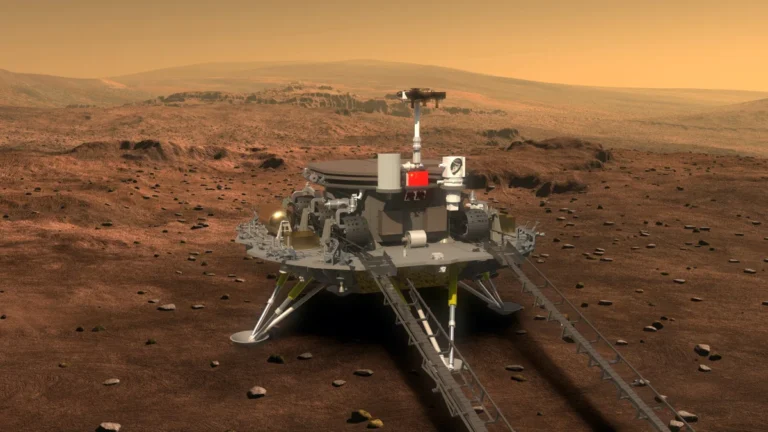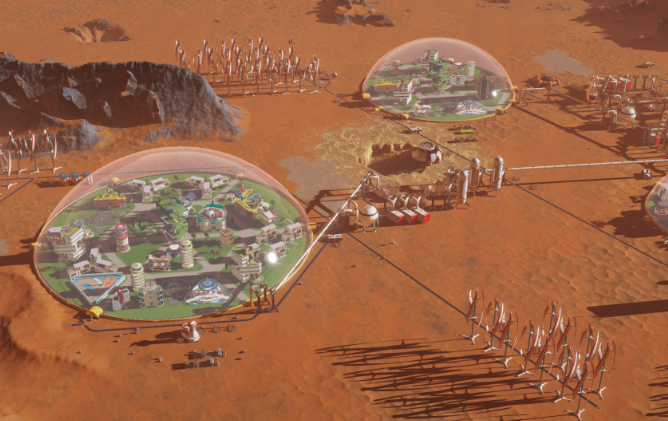Manned Mars Mission!

Imagine the profound moment when humanity’s dreams of exploring another planet become reality—a moment when a spacecraft, brimming with hope and technological prowess, touches down on the red, dusty surface of Mars, Manned Mars Mission is accomplished!
Manned Mars Mission, while an exhilarating prospect, is fraught with complexity. It begins with an exhaustive preparation phase, where astronauts undergo rigorous training that encompasses physical conditioning, technical skills, and psychological readiness. Every detail is meticulously planned, from the spacecraft’s design to the trajectory of the launch.

1. Preparation and Journey
1.1 Training: The Foundation for Success
1.1.1 Physical Training
Astronauts preparing for a Mars mission face rigorous physical demands. Their training regimen is designed to ensure they can handle the unique conditions of space travel and the Martian environment. Physical training on Mars involves a mix of cardiovascular exercises, strength training, and resistance workouts.
These activities are essential for preserving muscle mass and bone density, which are vital for offsetting the effects of Mars’ lower gravity, which is approximately 38% of Earth’s gravity
Additionally, astronauts practice in environments that simulate microgravity. This might involve using neutral buoyancy pools, where they float in water to mimic the sensation of weightlessness, or participating in parabolic flights, which create brief periods of microgravity.
Training in these conditions helps astronauts adjust to the physical changes they will experience and prepares them for tasks they will need to perform on Mars. Space suit drills are also a key component, as astronauts need to become adept at maneuvering and performing tasks while wearing the bulky and restrictive suits that protect them in space.
1.1.2 Technical Training
To successfully accomplish the Manned Mars mission, Mastering the technical aspects of the spacecraft is essential for a Mars mission. Astronauts receive comprehensive training on the spacecraft’s systems, including navigation, propulsion, and life support.
They learn to operate and troubleshoot these systems, ensuring that they can handle any technical issues that may arise during the mission. This training is critical, as astronauts will need to manage the spacecraft’s systems independently during their journey to Mars.
Moreover, astronauts must become proficient with the scientific instruments and equipment designed for Mars exploration. This includes tools for drilling, collecting soil and rock samples, and conducting experiments.
Training ensures that astronauts can set up and operate these instruments effectively, gather data, and perform analyses that will contribute to our understanding of Mars. The ability to troubleshoot and repair equipment is also emphasized, as malfunctions could have significant implications for the mission.
1.1.3 Psychological Preparation
Manned Mars Mission requires psychological resilience and it is crucial for the success of long-duration missions to Mars. Astronauts undergo training to prepare for the mental and emotional challenges of extended isolation, confinement, and distance from Earth. This includes strategies for managing stress and maintaining mental health, as well as techniques for effective communication and conflict resolution within the crew.
Simulation exercises are used to replicate the conditions of a long-duration mission, helping astronauts experience and prepare for the psychological and social dynamics they will face. These simulations provide insights into managing interpersonal relationships, dealing with the effects of isolation, and maintaining motivation over an extended period. Preparing for these psychological aspects is as important as physical and technical training, ensuring astronauts are well-rounded and ready for the demands of the mission.
1.2 Journey: The Path to Mars
1.2.1 Launch
The journey to Manned Mars Mission begins with a meticulously planned launch. The spacecraft must be engineered to endure the harsh conditions of space travel and the Martian environment. This includes designing systems to withstand extreme temperatures, radiation, and the mechanical stresses of launch and re-entry.
Trajectory planning is a critical component of the launch process. Engineers calculate the most efficient path to Mars, taking into account gravitational forces, orbital mechanics, and fuel consumption. The goal is to optimize the trajectory to minimize travel time and ensure the spacecraft reaches Mars with the necessary supplies and equipment.
The launch itself involves powerful rockets that propel the spacecraft out of Earth’s gravity. This phase is characterized by intense acceleration and requires precise timing and coordination to achieve the correct trajectory. Once the spacecraft is in space, it begins its journey toward Mars, setting the stage for the next phases of the mission.
1.2.2 Transit
The transit to Mars typically lasts about 6 to 9 months. During this period, astronauts must adapt to living in microgravity, which affects every aspect of their daily life, from sleeping and eating to exercising and performing work tasks. Regular exercise is crucial to counteract muscle atrophy and bone loss, which are common in low-gravity environments.
Maintaining tte spacecraft’s systems is a continuous responsibility. Astronauts monitor and manage life support systems, conduct scientific experiments, and address any technical issues that arise. The vast distance from Earth means communication is delayed by about 13 to 24 minutes each way, requiring astronauts to operate with a high degree of autonomy and make critical decisions without immediate input from mission control.
1.2.3 Arrival
Approaching Mars involves a complex Entry, Descent, and Landing (EDL) phase. The spacecraft must navigate Mars’ thin atmosphere, which presents challenges different from those encountered during entry into Earth’s atmosphere.
Advanced heat shields protect the spacecraft from the intense heat generated by atmospheric entry. The Manned Mars mission is ready to be accomplished.
As the spacecraft descends, it uses a combination of parachutes, retro-rockets, and landing gear to slow its descent and ensure a controlled landing. Precision is crucial during this phase to avoid landing in hazardous areas and to achieve the mission’s scientific objectives.
Successfully landing on Mars is a pivotal moment that marks the beginning of exploration and research. The preparation and journey leading up to this moment are vital for ensuring the mission’s success and achieving the goals set for humanity’s next great adventure.

2. Arrival and Landing
Arriving on Mars represents a pivotal moment in space exploration, combining advanced technology, precision engineering, and careful planning. This phase, known as Entry, Descent, and Landing (EDL), is one of the most critical and challenging parts of a Mars mission. Here’s an in-depth look at what this phase entails:
2.1 Entry into Mars’ Atmosphere
As the spacecraft approaches Mars, it must enter the planet’s thin atmosphere, which presents unique challenges compared to Earth’s denser atmosphere. The entry phase involves a series of sophisticated maneuvers designed to protect the spacecraft from the intense heat and friction generated during atmospheric entry.
Heat Shielding:
Protection Against Extreme Heat: The spacecraft’s heat shield is essential for managing the intense heat generated by friction as the spacecraft enters the Martian atmosphere. Constructed from ablative materials, the shield absorbs and disperses heat by gradually burning away.
Controlled Descent: In addition to thermal protection, the heat shield regulates the spacecraft’s descent rate, preventing it fom enering the atmosphere too rapidly and risking structural damage.
Deceleration:
Aerodynamic Drag: As the spacecraft descends through the atmosphere, aerodynamic drag reduces its speed. This deceleration is essential for lowering the velocity from interplanetary speeds to a safe landing velocity.
Aerodynamic Drag: The spacecraft’s design incorporates aerodynamic features that stabilize its descent and manage the forces experienced during atmospheric entry
2.2 Descent to the Martian Surface
Once the spacecraft has successfully entered the Martian atmosphere, it begins the descent phase. This phase involves a series of steps to ensure a controlled and safe landing.
Parachute Deployment:
Initial Slowing: At higher altitudes, large parachutes are deployed to reduce the spacecraft’s descent speed. These parachutes open in stages, beginning with smaller pilot chutes that ensure the main parachutes are deployed properly.
Slowing: While the parachutes greatly decrease the spacecraft’s speed, they alone cannot guarantee a soft landing. The spacecraft continues its descend under the parachute canopy until it reaches a lower altitude.
Retro-Rockets and Landing Systems:
Precision Landing: As the spacecraft approaches the Martian surface, retro-rockets or other landing systems are activated to further decelerate its descent and ensure an accurate landing. These systems use thrusters to manage the final descent and adjust the spacecraft’s orientation for a safe touchdown.
2.3 Touchdown and Initial Operations
Upon touching down, the spacecraft must transition to its surface operations phase. This involves several key activities:
Verification of Systems:
Initial Checks: Upon landing, the spacecraft’s systems are thoroughly inspected to confirm that they have survived the descent intact. This includes verifying the functionality of communication systems, life support mechanisms, and scientific instruments.
Initial Checks Checks Deployment: If the mission includes rovers or scientific instruments, there are deployed from the spacecraft. These tools are essential for exploring the Martian surface.
Surface Operations:
Establishing Communications: A reliable communication link with mission control on Earth is essential for coordinating subsequent operations and ensuring the mission’s success.
Habitat Setup (for crewed missions):
Crew Habitats: For crewed missions, establishing habitats and life support systems is a top priority. This involves making sure that living quarters are operational, secure, and prepared for extended habitation.
The arrival and landing phase on Mars is a complex and thrilling process that demands precise execution and advanced technology. For a manned Mars mission, successfully navigating this phase is crucial as it sets the stage for subsequent exploration and scientific discovery. It represents a significant milestone in humanity’s journey to explore the cosmos. Click here to view an animation of the Rover and experience what its landing on Mars entails.

3. Survival and Operations
Once a spacecraft has successfully landed on Mars, the focus shifts to ensuring the survival of the crew and the smooth operation of the mission. The Martian environment presents numerous challenges that require careful management and adaptation. Here’s a comprehensive look at how survival and operations are managed on the Red Planet.
3.1 Habitat and Living Conditions
3.1.1 Habitat Design
Designing a habitat for a Mars mission involves creating a self-sustaining environment capable of supporting human life in the harsh Martian landscape. This environment must address extreme temperatures, low atmospheric pressure, and high radiation levels. To meet these challenges, the habitat will use advanced insulation materials and radiation shielding to protect crew members from the planet’s harsh conditions.
3.1.2 Modularity and Adaptability
The habitat will be designed to be modular and adaptable, allowing for future expansion or reconfiguration as mission needs evolve. This flexibility is essential for accommodating changes in crew size, mission objectives, or technological advancements. Modular design also facilitates easier maintenance and upgrades.
3.1.3 Life Support Systems
A key aspect of habitat design is the development of life support systems. These systems must maintain a pressurized environment with controlled temperature and humidity to ensure human comfort and support the growth of plants for food and oxygen. Efficient air, water, and waste management systems will be crucial, utilizing closed-loop recycling technologies to conserve resources and enhance sustainability.
3.2 Daily Routine and Health
Maintaining a structured daily routine is essential for the health and well-being of astronauts on a Mars mission. A well-planned schedule that includes regular work hours, physical exercise, and leisure activities helps to preserve mental and physical health in the confined and isolated environment of space. Daily routines will incorporate exercise regimens tailored to counteract the effects of reduced gravity, which can impact muscle strength and bone density.
Nutritional meals, carefully planned and prepared, will ensure that astronauts receive the necessary vitamins and minerals to support their overall health. Regular health check-ups and psychological support will be integrated into the schedule to monitor physical conditions and address any mental health challenges.
Additionally, time will be allocated for personal activities and relaxation to help manage stress and maintain morale. By adhering to a balanced daily routine, astronauts can better cope with the demands of the mission and contribute to its overall success.
3.3 Resource Management and Maintenance
Efficient resource management and maintenance are critical for the success of a Mars mission, where logistical constraints and the harsh environment pose significant challenges. The spacecraft and habitat systems must be meticulously managed to ensure a reliable supply of essentials such as power, water, and oxygen.
This involves careful planning of resource usage, implementing recycling systems to conserve vital materials, and regular maintenance to prevent system failures. Advanced technologies, such as autonomous repair systems and real-time diagnostics, play a crucial role in monitoring equipment health and addressing issues before they become critical.
Moreover, mission protocols include scheduled maintenance activities and contingency plans to address potential resource shortages or system malfunctions. The ability to effectively manage resources and perform timely maintenance will be pivotal in ensuring the sustainability and success of a crewed Mars mission.



2 comments